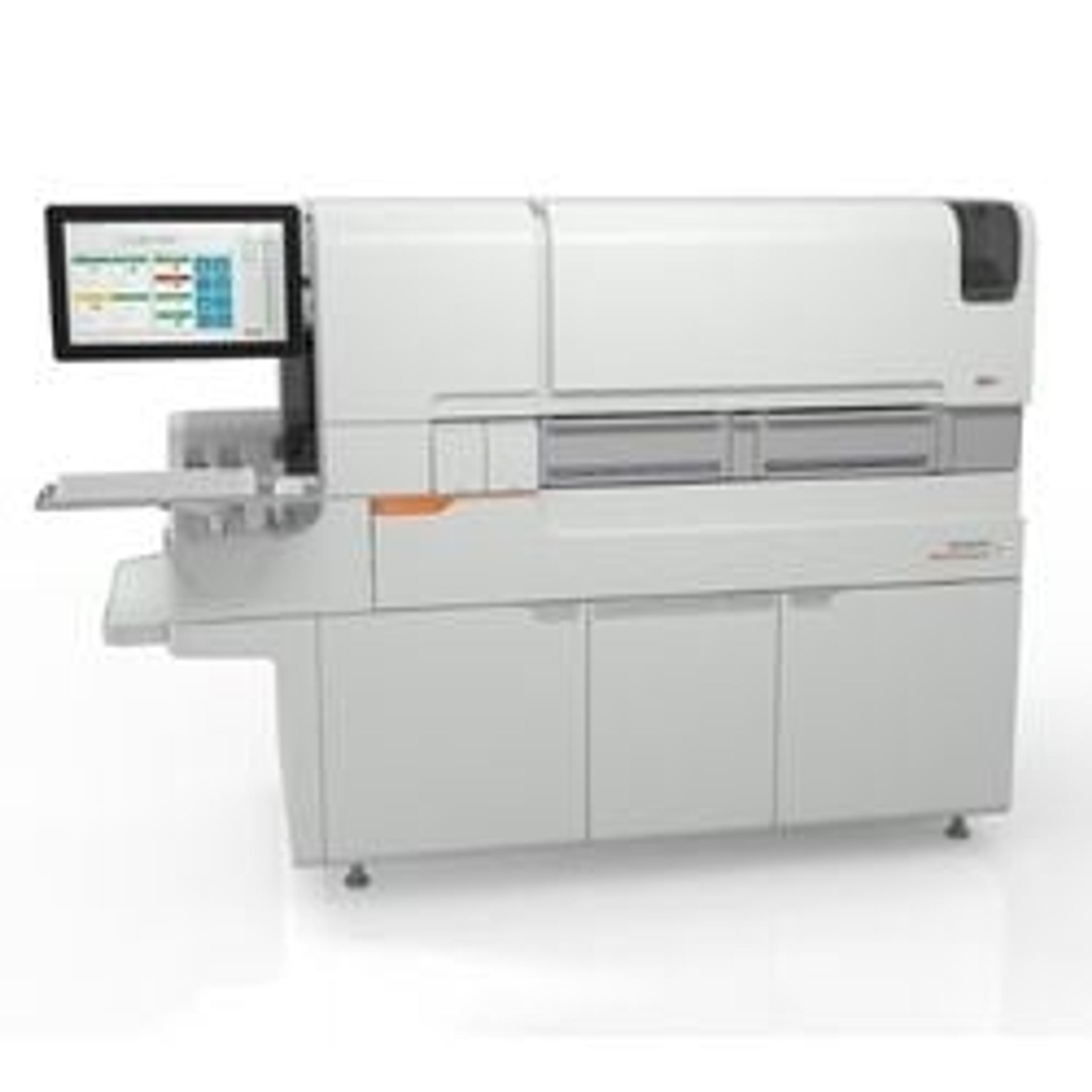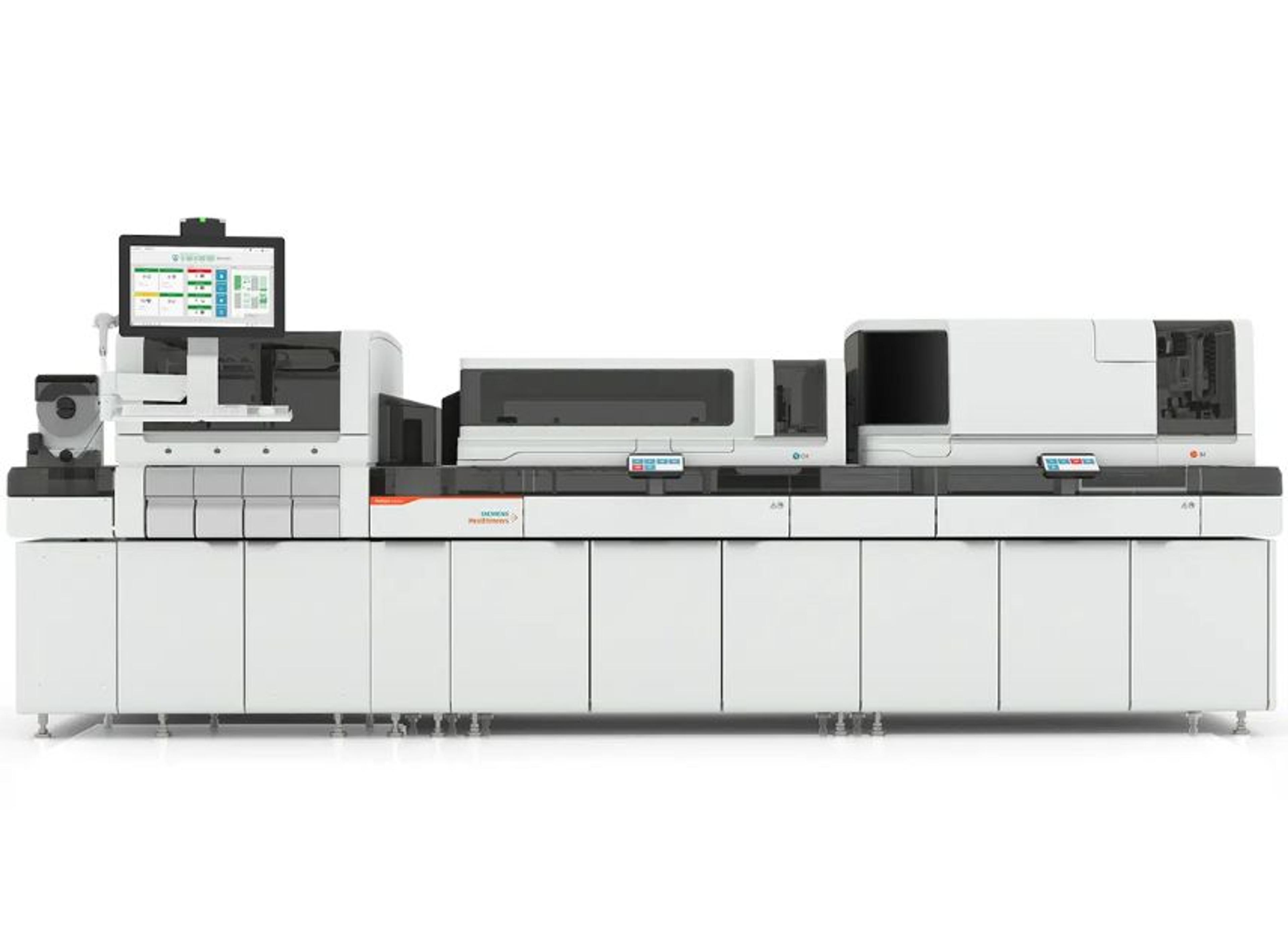Discussing diagnostic trends and innovations after ADLM 2024
Discover how sustainability, efficiency, automation and other trends are impacting diagnostic innovation and improving healthcare outcomes
5 Aug 2024Lisa Rose, Executive Vice President, Head of Core Lab Solutions at Siemens Healthineers, discusses the latest trends in diagnostics, including optimizing efficiency with automation, integrating sustainability into design, and the focus on addressing high unmet medical need. Rose also highlights the key innovations Siemens Healthineers showcased at the Association for Diagnostics & Laboratory Medicine (ADLM) Annual Meeting 2024, in Chicago.

Lisa Rose, Executive Vice President, Head of Core Lab Solutions at Siemens Healthineers
Prevailing trends in diagnostics
With a distinguished career in driving laboratory diagnostics forwards, Lisa Rose is excellently placed to comment on the recent trends shaping innovations in the industry. Rose begins by noting that many of the prevalent current trends in diagnostics are in fact long-standing, but have, for a variety of reasons, gained significant attention of late.
The first trend Rose highlights is that of effectively addressing chronic disease management. “With the cost constraints that governments are facing worldwide, the growing burden of chronic diseases and an aging population necessitates standardized platforms to monitor comorbidities and novel biomarkers that can better meet unmet clinical diagnostic needs. For instance, there is increasing interest in neurology – particularly in advancing the science behind diagnostic tools for neurological and autoimmune diseases like Alzheimer’s Disease and MS– which goes hand-in-hand with new treatments that are being developed.”
“A second trend, strengthened by the current staffing shortages, is the need for operational efficiency, and automation to reduce manual involvement. For a diagnostics leader like Siemens Healthineers, with its rich heritage in engineering, it is a conscious decision to focus on human-centered and sustainable engineering," asserts Rose. By automating routine and administrative tasks, the company allows laboratorians to concentrate on complex, high-value patient work. This aligns with what Rose refers to as the "do less" theme, aiming to minimize manual interventions while maximizing efficiency.

At Siemens Healthineers, product lines are designed with sustainability in mind
And last but not least, Rose comments that the industry is seeing a growing emphasis on sustainability and value-based healthcare due to new regulation and reimbursement arrangements. “At Siemens Healthineers, our product lines are designed with sustainability in mind. Our new instruments consume significantly less water and energy than our previous platforms or market competitors,” Rose continues. “For example, Atellica® CI and Atellica® Solution Analyzers consume the least water compared to other combined analytical systems, while offering high-throughput capabilities and fast turnarounds.”
A collaborative future for diagnostics innovation
As a company focused on innovation for the future, Rose emphasizes Siemens Healthineers’ collaborative outlook, which is evidenced by the company’s commitment to distributed testing and improving access to diagnostics. “Driven by the work our upstream innovation group spearheads, our goal is to continuously work with specialists and partners to bring clinical advances and optimal testing to market,” Rose tells us. “Some of the initiatives to date include our involvement in PREDICTOM, an EU consortium identifying individuals at risk of developing dementia. We also focus on emerging areas like inflammatory markers, with some work ongoing to advance our understanding in this space.” Oncology remains a key interest area for Siemens Healthineers, as does infectious disease and sepsis, as the team works on designing innovative solutions to address these critical health challenges.
Showcasing innovations at ADLM 2024
The Siemens Healthineers team had a significant presence at ADLM 2024, with 33 posters highlighting new evidence across diagnostics offerings in a wide range of clinical areas. The team showcased the latest Atellica® family of new analyzers and assay innovations, unveiled the new total lab automation solution and invited customers to collaborate and co-create the next-generation Atellica® Solution.
Rose is particularly excited about the new features of the Atellica® CI Analyzer that were demonstrated at ADLM. “We showcased the Atellica® CI Analyzer with Atellica® Integrated Automation (AIA) configuration. This system delivers high-volume lab capabilities in a smaller setting, making it a unique offering in the industry,” Rose explains. “The Atellica® CI Analyzer also boasts a large range of assays with one of the fastest turnaround times, thanks to its dual processing system. While the Atellica® CI Analyzer is standardized with the Atellica® Solutions family across its user interface, software and reagents, it is uniquely bespoke in terms of its capabilities.”

The Atellica® CI Analyzer with Atellica® Integrated Automation (AIA)
The Atellica® CI Analyzer with Atellica® Integrated Automation (AIA) configuration offers sample management, de-capping, and resealing, all within a compact footprint and comes with remote monitoring and predictive service capabilities. Designed specifically for low-volume labs or ‘spokes’ as they are referred to (relating to the hub and spoke model), this highly automated system addresses staffing issues without needing separate tracks or task targeted automation (TTA) units.
Excitingly, the Siemens Healthineers team also presented a new track system for high-volume labs: the next-generation total lab automation solution by Inpeco. This system features clever engineering and vertical transport to address gaps in current total laboratory automation (TLA) and meet customer needs effectively.

Conceptual image showing neurofilament light chains
From a clinical innovation standpoint, the Siemens Healthineers team is particularly proud of the upcoming launch of NfL (Neurofilament Light Chain)1, the first blood-based assay to assess Multiple Sclerosis disease activity. This assay is for use on the Atellica® IM Analyzer and the ADVIA Centaur XP/XPT Systems. Developed in collaboration with Novartis, the assay achieved a CE mark in 20242. More on Neurofilament Light Chain assay and other clinical and engineering highlights, were part of the over 30 poster abstracts, Siemens Healthineers presented this year at ADLM.
This dual focus on continuously optimizing its instruments to better serve assay performance and support novel biomarker development, gives momentum to Siemens Healthineers’ holistic approach to driving clinical value. Rose asserts, “We have been in this business for a long time, and this systems approach is what makes us truly unique in the diagnostics space. We can enhance immediate workflow efficiency and operational effectiveness, while also improving diagnostic value in patient care.”
References
1. NfL is not for sale in the USA. Not yet commercially available in all countries. Future availability cannot be guaranteed and is dependent on local requirements.
2. CE 0197.


